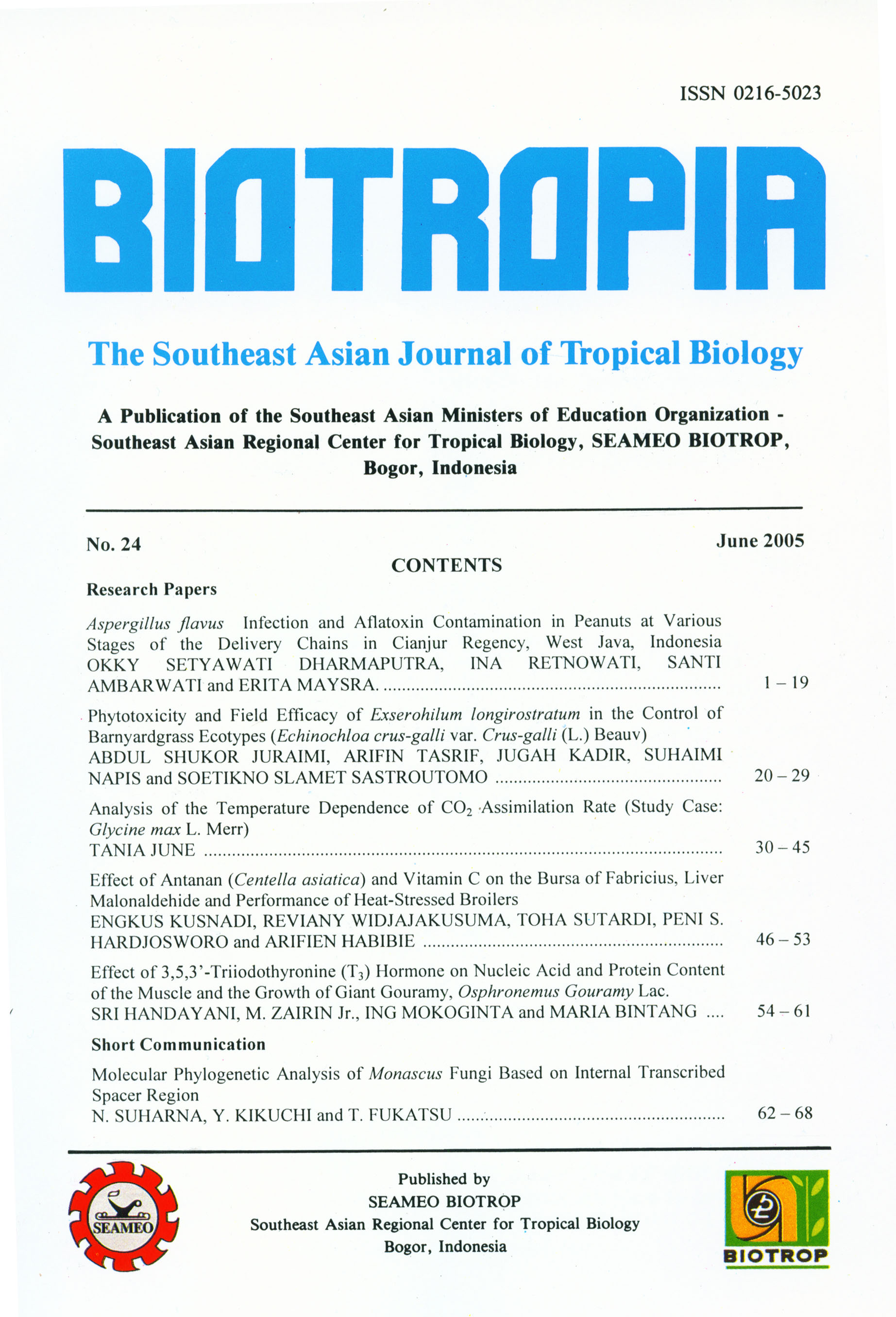
Tags
ASPERGILLUS FLA VUS INFECTION AND AFLATOXIN CONTAMINATION IN PEANUTS AT VARIOUS STAGES OF THE DELIVERY CHAINS IN CIANJUR REGENCY, WEST JAVA, INDONESIA
Content Language : English

A survey to obtain information on pre- and postharvest handling of peanuts at farmer, collector, wholesaler and
retailer levels, including Aspergillus flavus infection and aflatoxin BI contamination of peanuts collected in Cianjur
regency, West Java, was conducted during the harvest period of the wet season of February 2004. The moisture
contents and physical qualities of the peanuts were also determined.
Thirteen and 40 dry pod samples were collected randomly from 12 farmers and 23 collectors, respectively.
Seven dry kernel samples were also collected from collectors. Five and 45 dry kernel samples were collected randomly
from 2 wholesalers and 45 retailers in traditional markets, respectively. Thus, a total of 110 dry peanut pod and kernel samples
were collected.
The results of interviews with farmers, collectors, wholesalers and retailers, and also the moisture contents and
physical qualities of the peanuts arc described in this article.
The percentages of samples infected by A. flavus were highest at the wholesaler as well as at retailer levels
(100%, respectively), followed by those sampled at the collectors (85.0 and 85.7%, respectively), and farmers
(84.6%). The mean percentage of infected kernels in infected samples of peanuts collected from retailers was the highest
(87.6%), followed by those collected from wholesalers (72.4%), collectors in the form of kernels (23.3%) and pods (17.7%),
and farmers (15.2%).
The range of aflatoxin BI contents in peanut samples collected from farmers (dry pods), collectors (dry pods),
wholesalers (dry pods and kernels) and retailers (dry kernels) were < 3.6 -114.2, < 3.6 -2999.5 and < 3,6 - 34.1, < 3.6 -
6065.9, and < 3.6 - 6073.0 ppb, respectively. The highest aflatoxin B, contents at the wholesaler and retailer levels were
6065.9 ppb (in one sample) and 6073.0 ppb (in one sample), respectively. The percentage of samples contaminated with
more than 15 ppb of aflatoxin BI was the highest in peanuts collected from wholesalers (80.0% of samples), followed by
retailers (75.6%), farmers (38.5%) and collectors (30.0 and 14.3%). In 1999 Codex Alimcntarius Commission determined
that the maximum total aflatoxin content in peanuts intended for further processing is 15 ppb, suggesting that an alarming
proportion of peanuts throughout the Indonesian food chain arc in excess of this maximum limit.
Link

This work is licensed under a Creative Commons Attribution-NonCommercial-NoDerivatives 4.0 International License.
